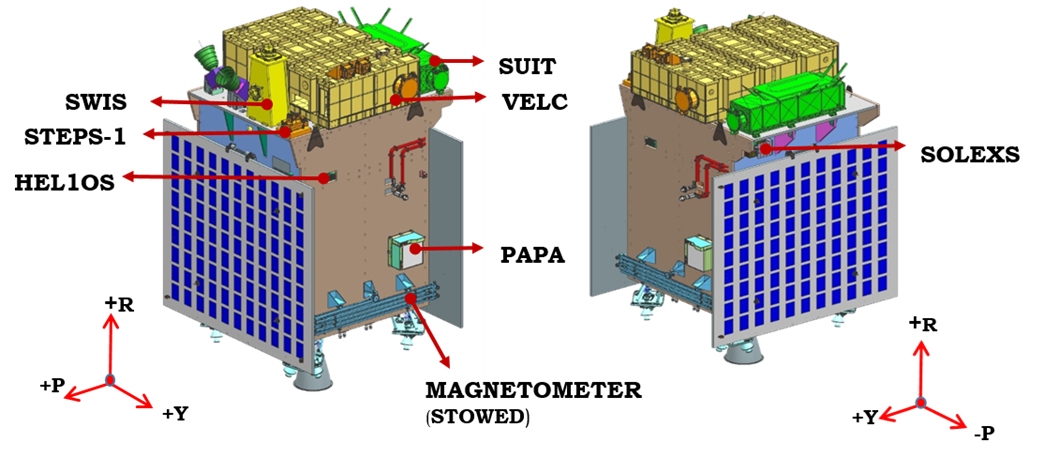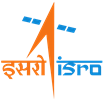| ASPEX | : | Aditya Solar wind Particle EXperiment |
| ASPEX Subsystems | : | Solar Wind Ion Spectrometer(SWIS) and Supra Thermal Energetic Particle Spectrometer(STEPS) |
| Principal Investigator | : | Prof. Dibyendu Chakrabarty |
ASPEX Science Objective
Aditya-L1 is equipped with seven state-of-the-art payloads, comprising four remote sensing instruments and three in-situ instruments. Figure 1 shows the mounting of each payload on the spacecraft. The remote sensing payloads are dedicated to observing the photosphere, chromosphere, and the outermost layers of the Sun (corona) using electromagnetic radiation emitted by the Sun. Complementing these, the in-situ instruments work in tandem to measure in-situ particle and magnetic information, providing a comprehensive understanding of solar dynamics. These payloads are:
- Visible Emission Line Coronograph (VELC)
- Solar Ultra-violet Imaging Telescope (SUIT)
- Aditya Solar wind Particle EXperiment (ASPEX)
- Plasma Analyser Package for Aditya (PAPA)
- Solar Low Energy X-ray Spectrometer (SoLEXS)
- High Energy L1 Orbiting X-ray Spectrometer (HEL1OS)
- Magnetometer (MAG)

ASPEX Science Goals
- What are the processes that give rise to the solar wind particles with different energies?
- In what way the supra-thermal population in the solar wind responsible for the generation of solar energetic particles in the solar wind?
- How does AHe (Helium/alpha particle abundance) change corresponding to various solar events (Flares, CME’s, CIR’s)? A spin-off of these investigations will be an insight into efficacy or otherwise of AHe as a space weather forecasting tool.
- What plasma processes cause the thermal anisotropies in the solar wind?
- What processes make the solar wind turbulent?
ASPEX Uniqueness
- Multi-directional measurements
- Alpha-Proton separation
- Both low and high energies


